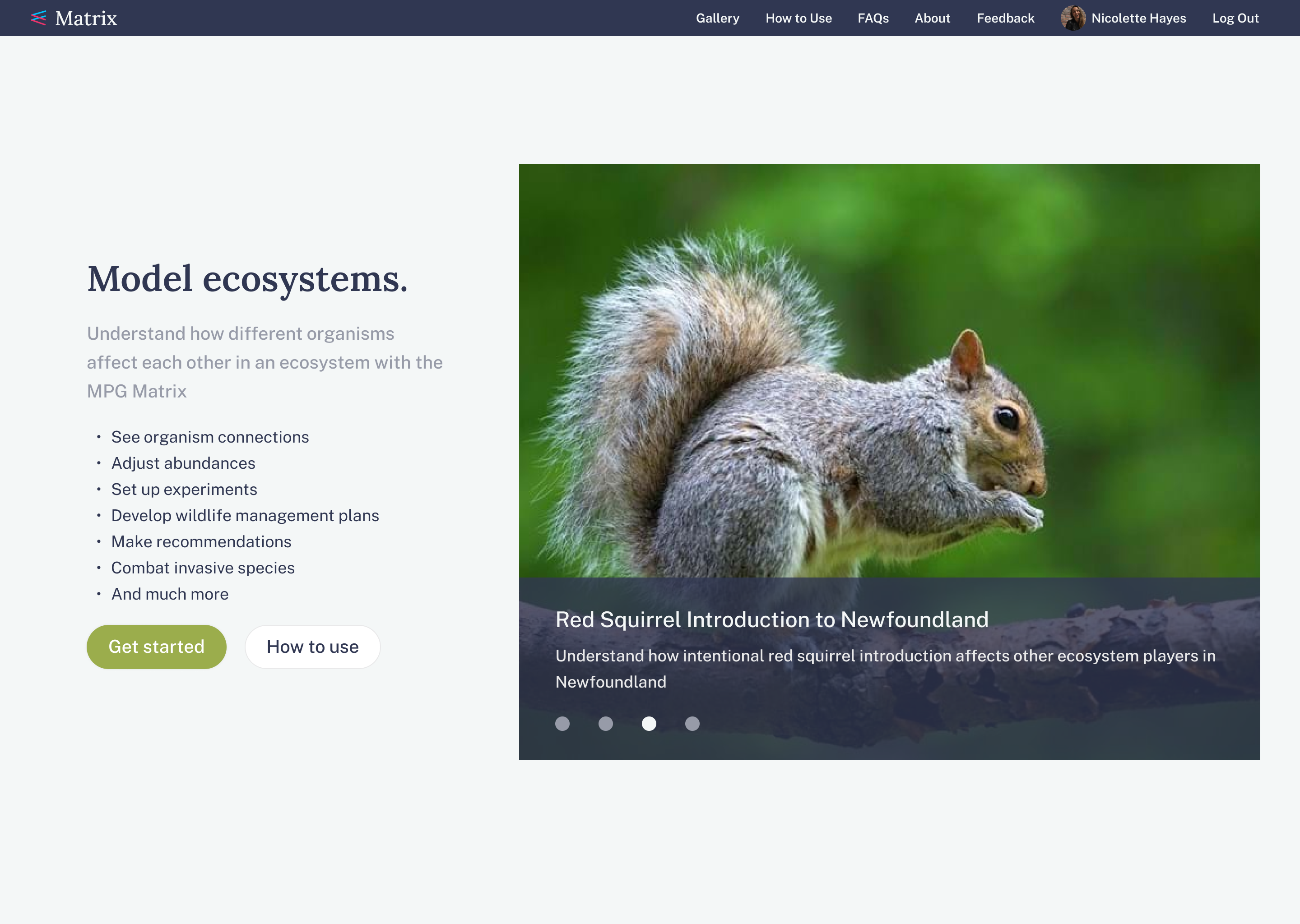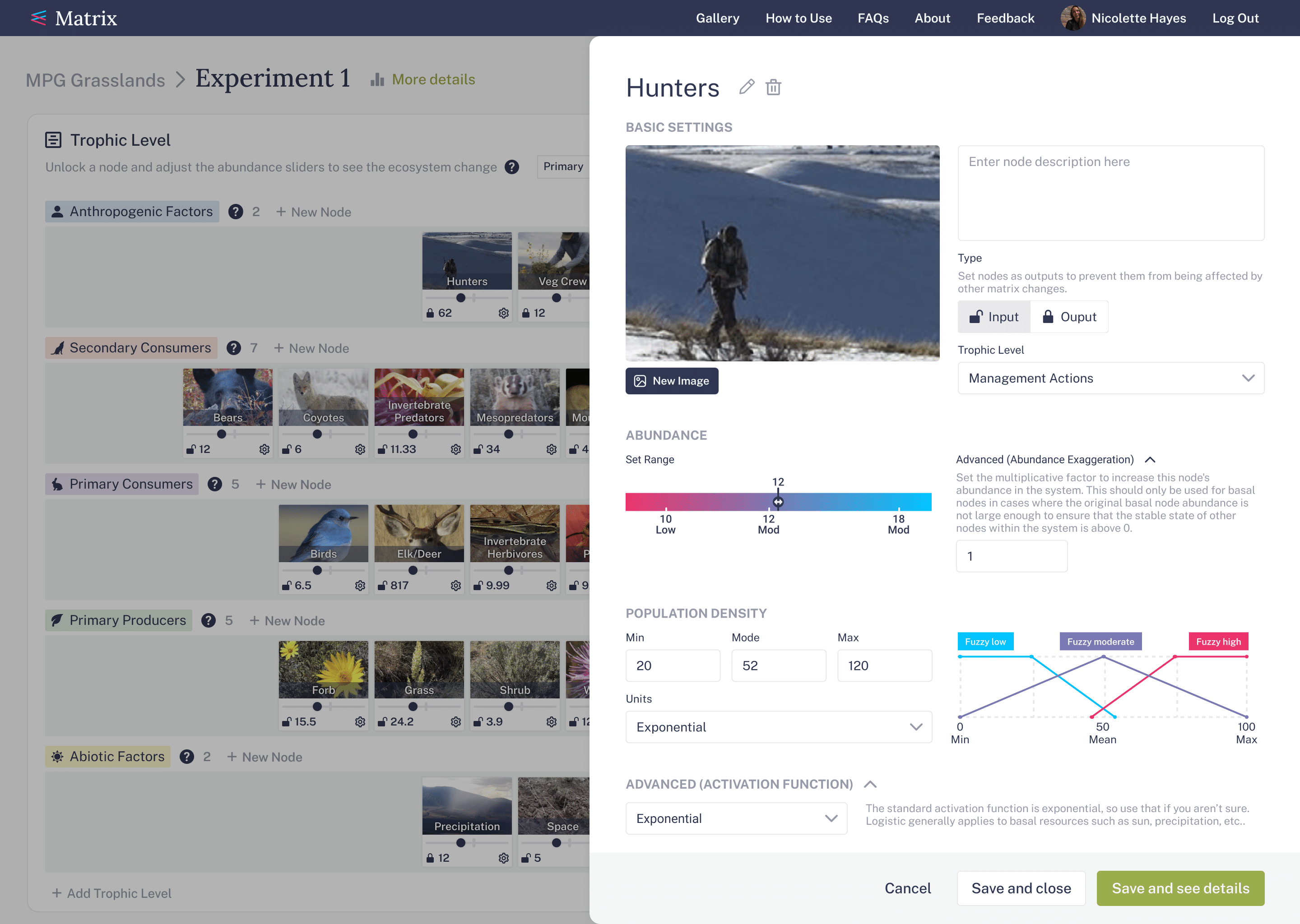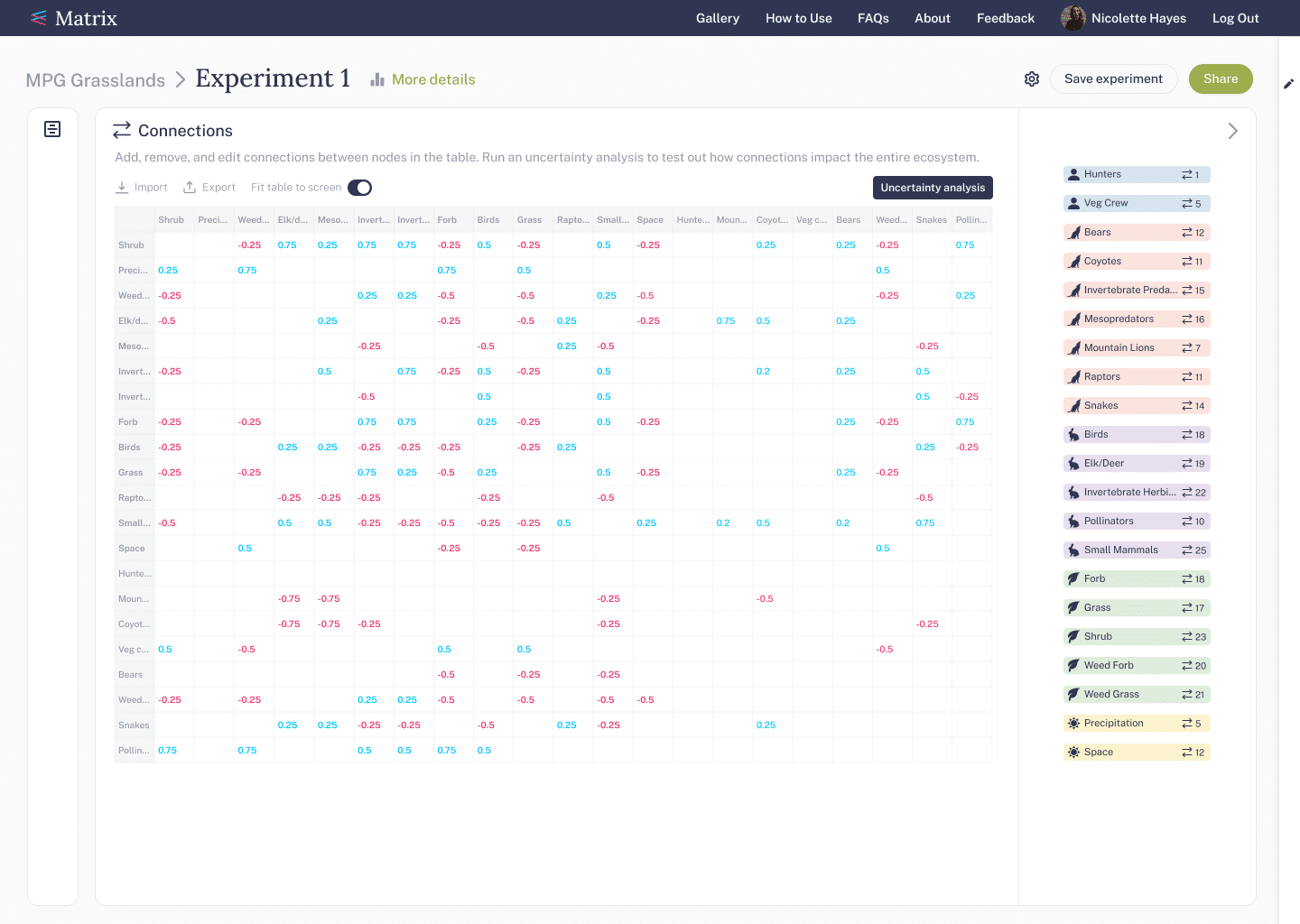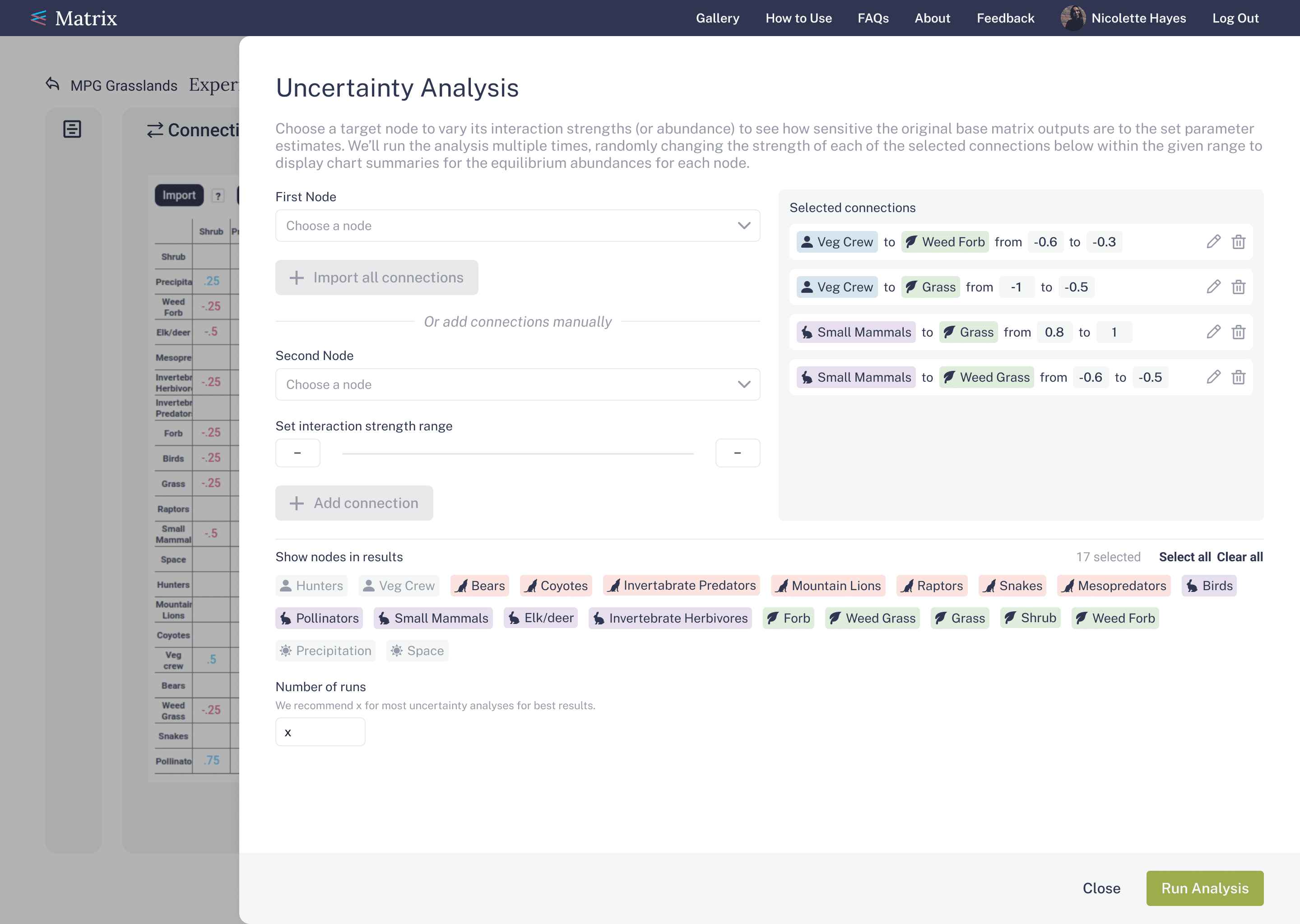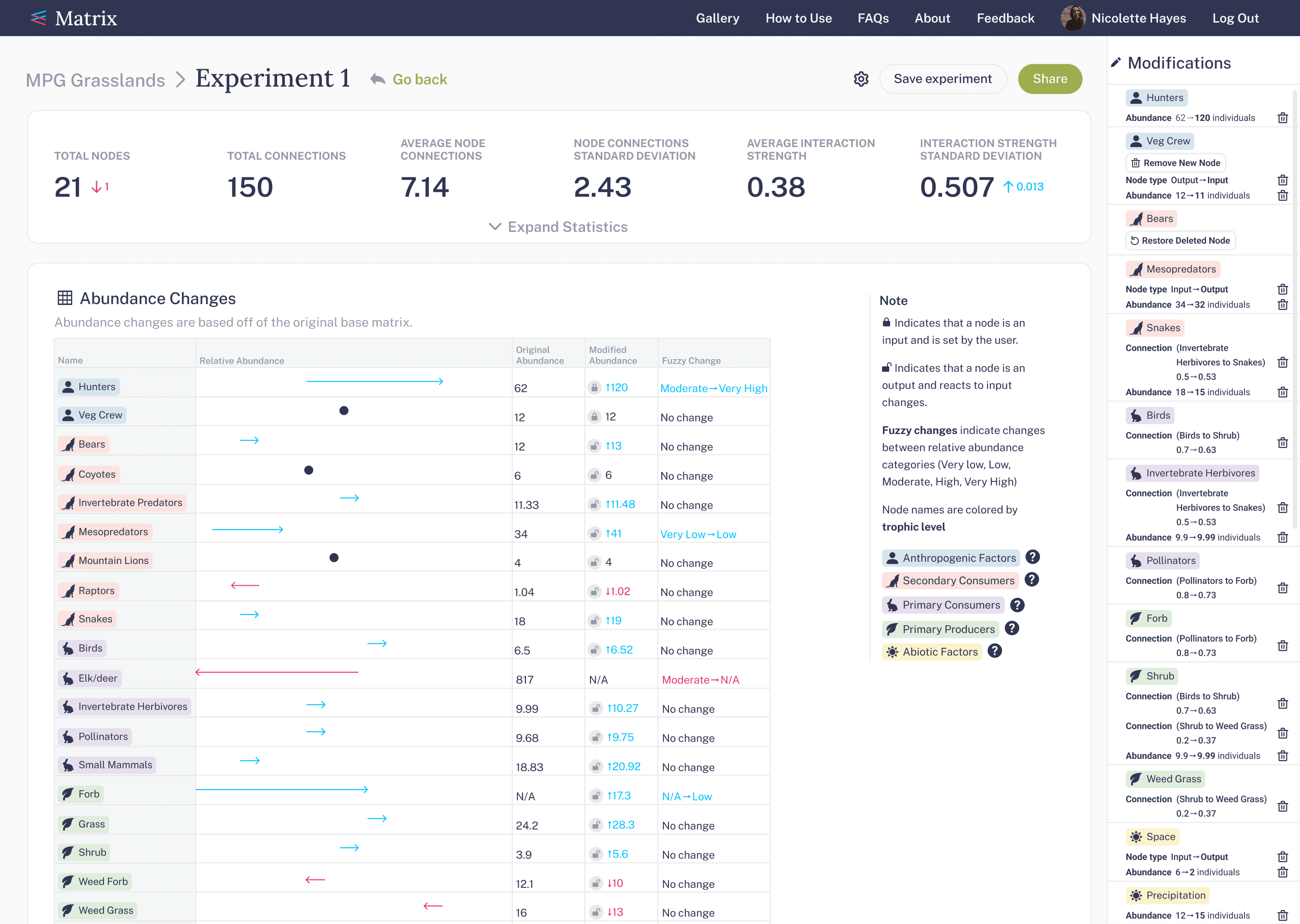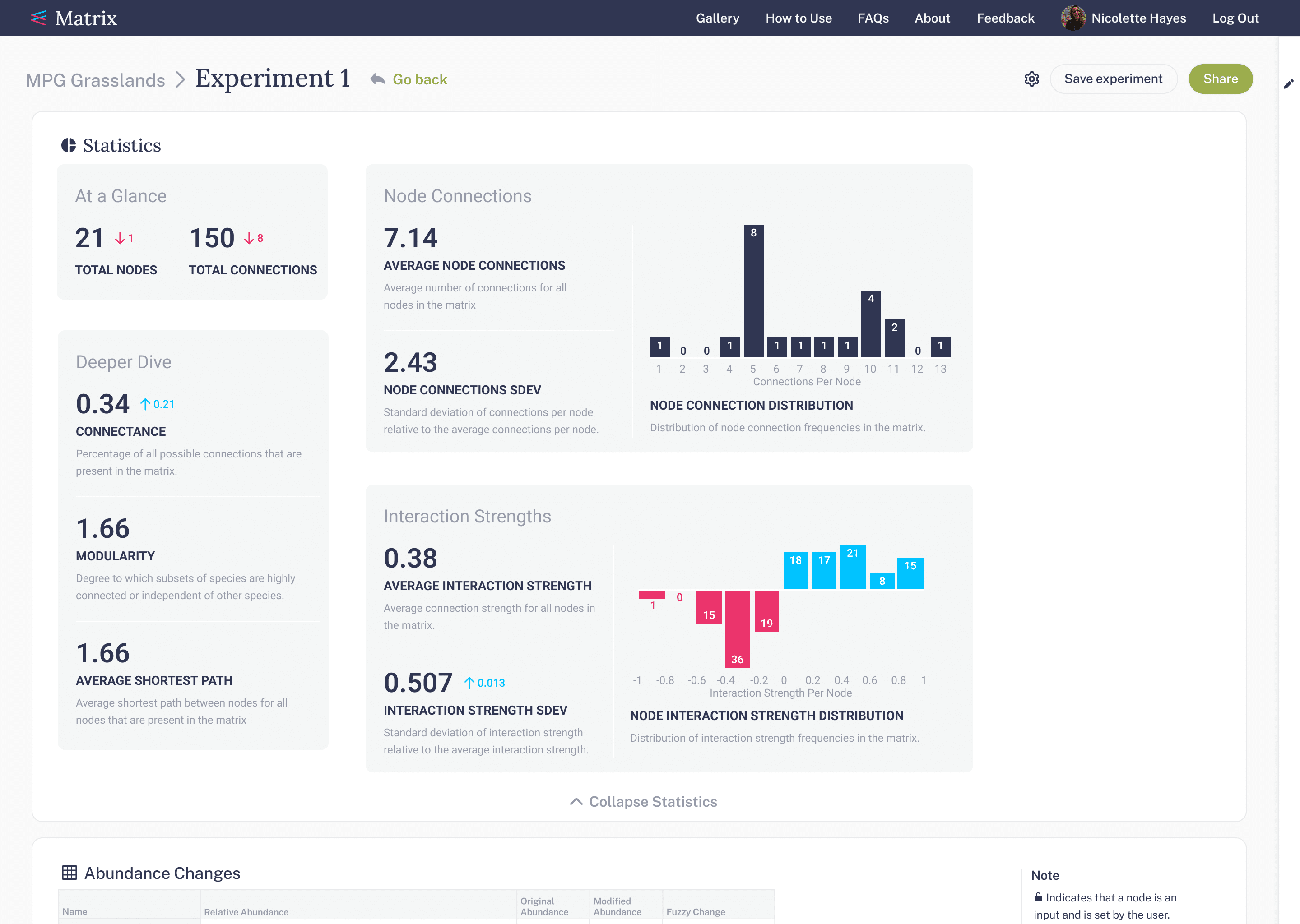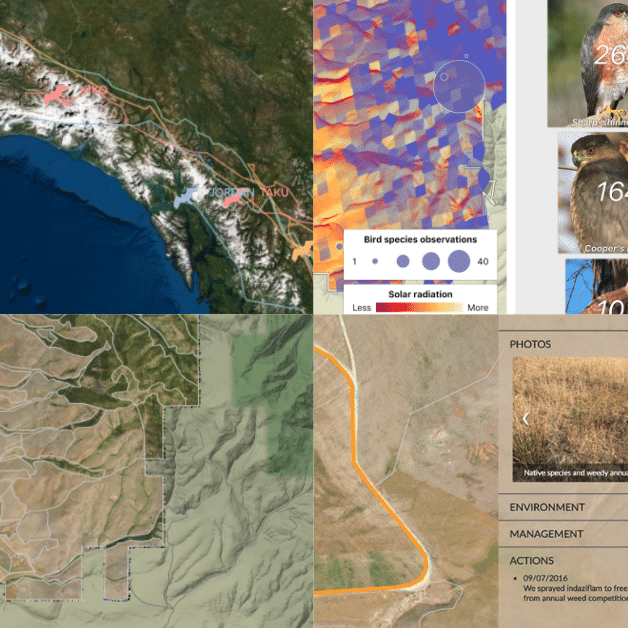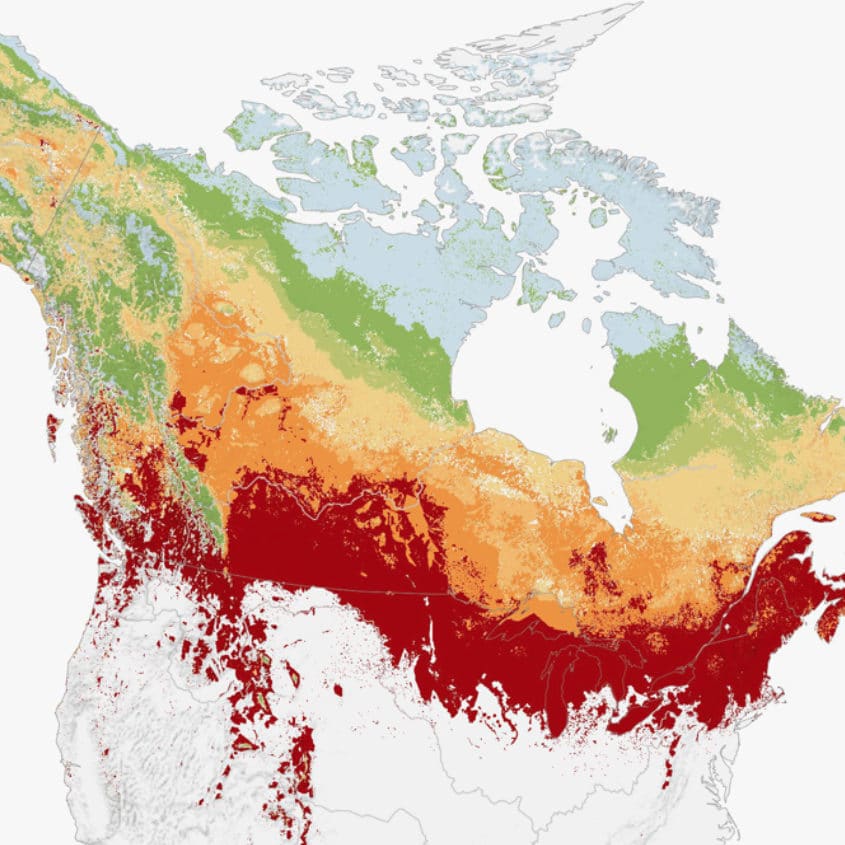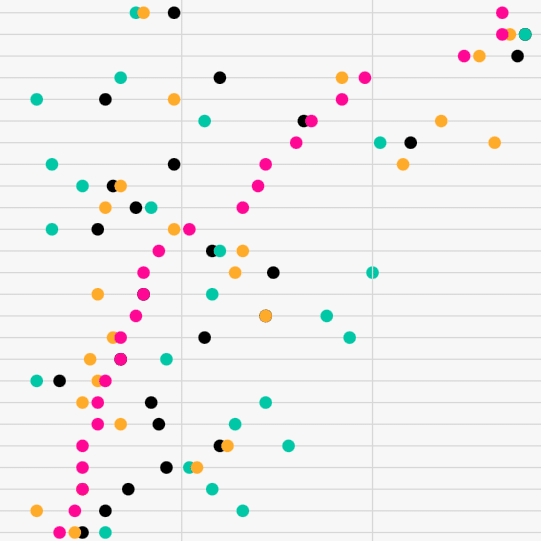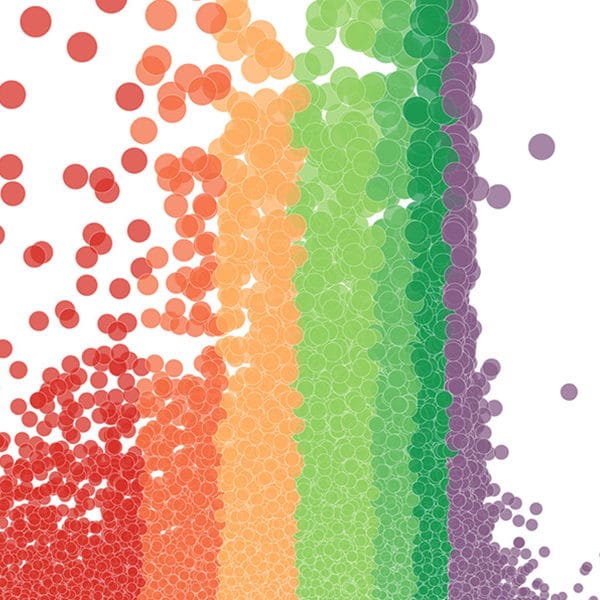Modeling ecosystems with MPG Matrix
Visualizing a new model to predict conservation impacts in ecosystems and understand how species affect each other

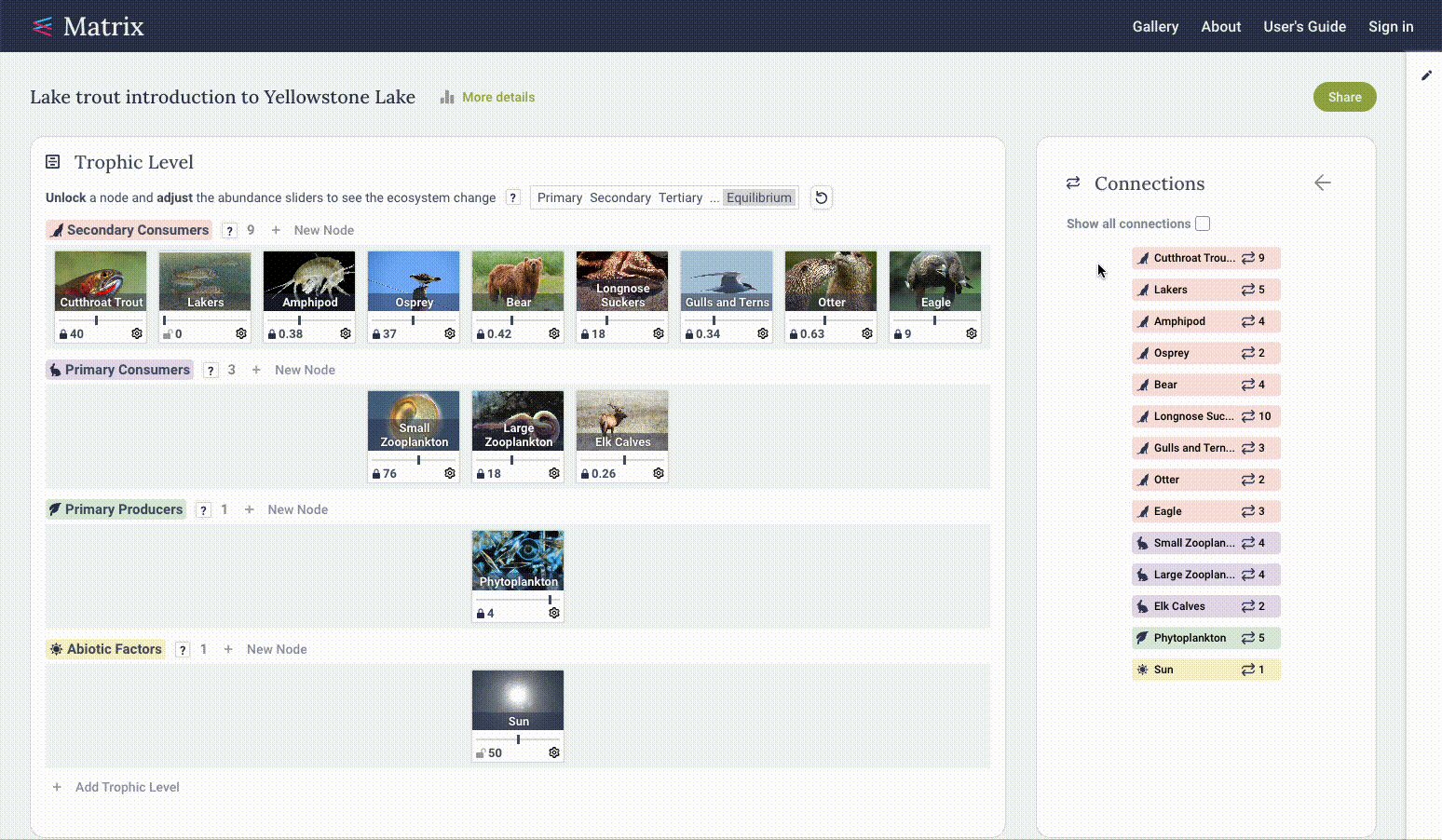
Background
Stamen has a fruitful multi-year relationship with MPG, a 15,000 acre ranch in Montana that specializes in habitat restoration and ecological research. MPG and Stamen collaborate with Dean Pearson, an ecologist and professor at University of Montana, who had been working with researchers on a model that qualitatively predicts the networked impacts of change on an ecosystem. Stamen was brought in to create an interface for this model, with the goal of predicting the second-order impacts of conservation efforts. For example, if you re-introduce one species to an ecosystem, what unanticipated impacts could it have on the all species?
What we made
Originally a tool for social science research, Professor Pearson has been exploring its applicability to relationships in ecological systems. The core of the project is a multi-relationship technique for understanding complex relationships called fuzzy cognitive mapping. As the project has evolved, we’ve focused our efforts on broadening the tool’s audience with an emphasis on students, from middle schoolers learning about basic ecological concepts to graduate school students modeling ecosystems related to their research. Looking into the future, we hope to continue to build out the application so wildlife managers and policy-makers can utilize the tool’s prediction power to make more informed decisions on management plans. Now it’s more important than ever that we understand the possible implications of any decisions related to ecosystems, as nature often proves more complicated than we anticipate.
